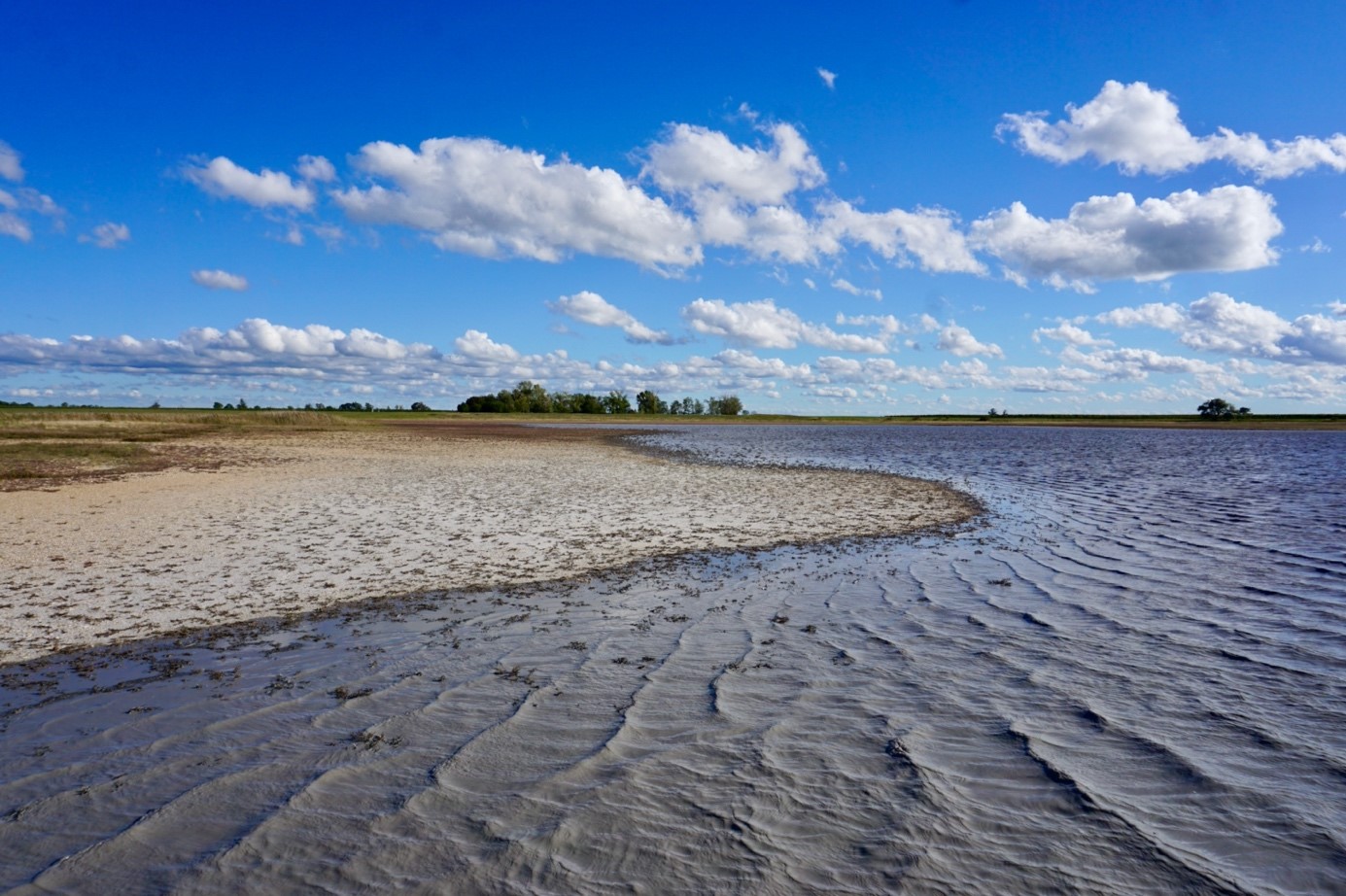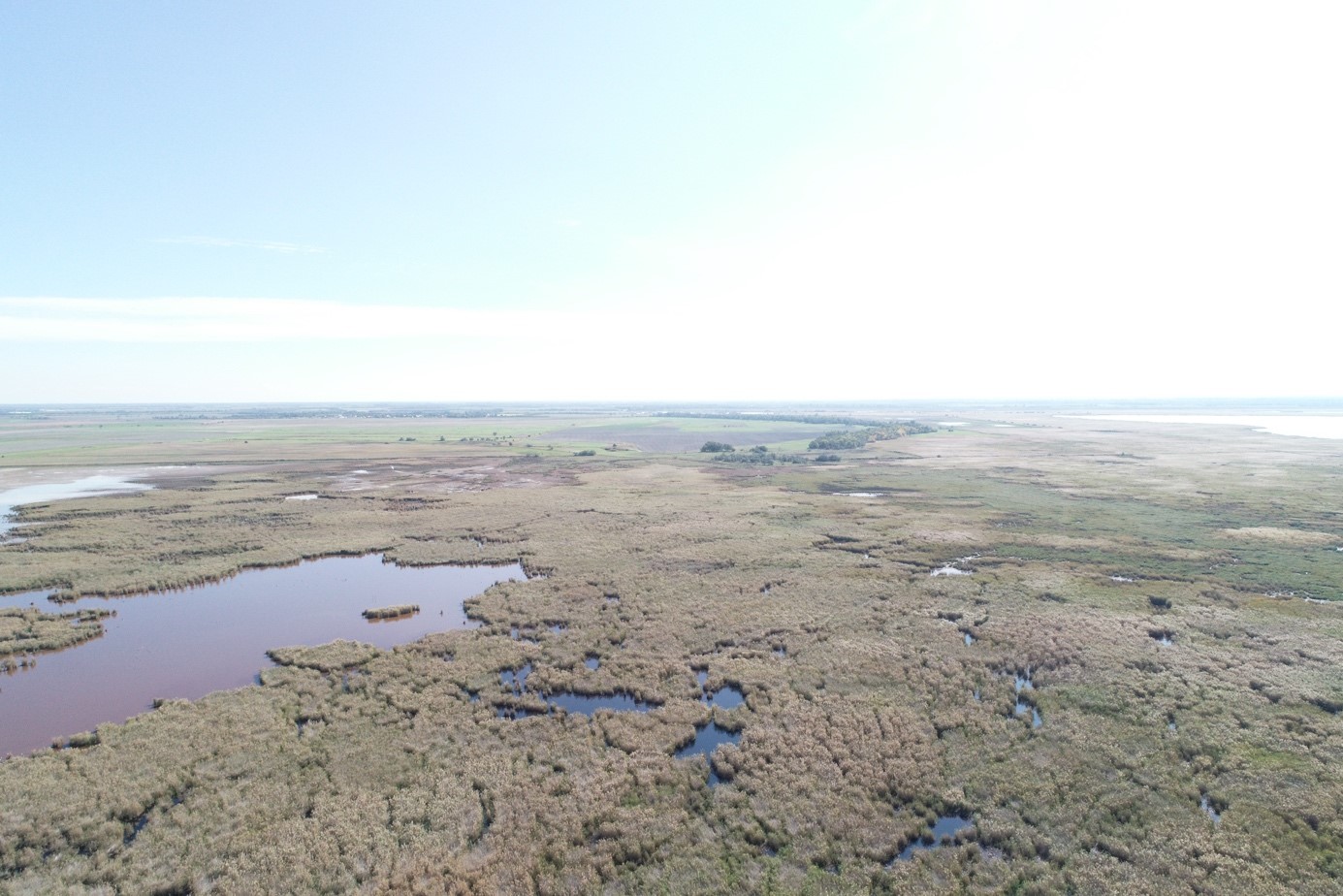LTSER Platform Neusiedlersee - Seewinkel (Emerging)
Operator: Biologische Station Neusiedler See, Illmitz and Nationalpark Neusiedler See - Seewinkel
DEIMS-SDR Database: LTSER Plattform Neusiedlersee - Seewinkel
Contact: Thomas Zechmeister and Harald Grabenhofer
Associated Sites:
- Biologische Station Neusiedler See
- Nationalpark Neusiedler See - Seewinkel
Site description
The LTSER Platform Neusiedler See – Seewinkel represents Europe's most western steppe lake - Lake Neusiedl - and the diverse cultural landscape that it is surrounded by. A mosaic of salt marshes, periodically dry saline lakes, sand habitats, reed habitats, dry and wet meadows, vineyards, cropland, touristic infrastructure and rural settlements defines this area.
The region (average altitude 120 m a.s.l.) is characterised by a hot, dry Pannonian climate with an annual precipitation of 600 mm and temperatures between 40 °C in summer and -20 °C in winter, making this area unique in Austria and contrasting with the alpine landscapes of western Austria.

Located on the eastern edge of the Alps and the western edge of the small hungarian plain the area is one of Austria’s hotspots of biodiversity. Alpine, asian, mediterranean and nordic species are present as well as endemics. The high diversity of habitats results from a high variability of environmental factors as different soil types, flooding and draught but also anthropogenic influence.
Austrias largest lake, Lake Neusiedl, provides Europe’s second largest reed belt and therefore is one of the most important nesting sites for several species in Central Europe. The area is of international importance as a resting site for migratory bird species.
The lake is also one of the most popular tourist destinations in the eastern part of Austria. In the last decades, the typical regional tourism changed to a more diversified tourism based on nature experience, cycling and other sports activities, cultural events, wine and gastronomy. Besides, agriculture is a main economic factor in the area, which also went through a major transition from extensive livestock farming to intensive agriculture.
The area is designated as National Park (partly), Ramsar Site, Natural Heritage Site, Natura 2000 Site, Nature Conservation area and Protected Landscape.
The LTSER Platform Neusiedler See - Seewinkel is managed by the „Biologische Station Neusiedler See“ and the „National Park Neusiedler See – Seewinkel“. Since the early seventies local and regional research has been coordinated and performed by the Biologische Station Neusiedler See. Today the LTSER Platform Neusiedler See – Seewinkel includes 8 national institutions: Biologische Station Neusiedler See (Federal Country of Burgenland), Nationalpark Neusiedler See – Seewinkel, ABOL (Natural History Museum Vienna), Hydrographic Service Burgenland, Medical University of Vienna, University of Vienna, Environment Agency Austria.
Scientific research is therefore wide but can be summarised on (1) monitoring of freshwater ecosystems, (2) bird migration and breeding behaviour, (3) mapping and assessment of vegetation, (4) monitoring of climate and effects of climate change, (5) monitoring of insects, (6) conservation management and (7) regional development. The aim of research is to provide decision-making tools for sustainable ecosystem management and conservation as well as sustainable regional development.

Publications
- Albert R., Werner V. & Popp M. with contributions by Fischer M.A. & Niklfeld H. (2020): Botanische Kostbarkeiten vor unserer Haustür - Die Salzpflanzen im Gebiet des Neusiedler Sees, Burgenland (Österreich), Acta ZooBot Austria 157, 115–143
- Dvorak, M., Hadarics, T., Dorogman, C., Laber, J., Pellinger, A., Ranner, A. & Tatai, S. (2020): Artenliste der Avifauna des Neusiedler See - Gebiets. A Fertő-taj madarai Fertő–Hanság Nemzeti Park. Nationalpark Neusiedler See - Seewinkel, Fertő–Hanság Nemzeti Park & BirdLife Österreich. 1-96.
- Wolfram, G., Sigmund, E. & Fürnweger, G. (2020): Fischökologisches Monitoring Neusiedler See. Tätigkeitsbericht 2020. Nationalpark Neusiedler See – Seewinkel, 1-24.
- Dvorak, M., Bieringer, G., Filek, N., Karner-Ranner, E., Kohler, B., Laber, J., Nemeth E., Pellinger, A., Rauer, G. & Wendelin, B. (2020): Ornithologisches Monitoring im Nationalpark Neusiedler See – Seewinkel - Bericht über das Jahr 2020. Nationalpark Neusiedler See-Seewinkel, 1-59.
- Zittra C., Vitecek S., Obwaller A.G., Rossiter H., Eigner B., Zechmeister T., Waringer J., Fuehrer H. P. (2017): Landscape structure affects distribution of potential disease vectors (Diptera: Culicidae). Parasites & vectors, 10(1), 205.
- Korner, I. (2014): Durchführung eines wissenschaftlichen Begleitmonitoringprogrammes in der Graurinderweide des Seevorgeländes. Tätigkeitsbericht Juni 2012 bis Juni 2014. AVL – Arge Vegetationsökologie und Landschaftsplanung: 1-62.
- Hermann A., Kuttner M., Hainz-Renetzeder C., Konkoly-Gyuró E., Tirászi A., Brandenburg C., Allex B., Ziener K., Wrbka T. (2014): Assessment framework for landscape services in European cultural landscapes - an Austrian Hungarian case study, Ecological Indicators, Vol. 37, Part A, 229-240.
- Horváth Z., Vad C.F., Vörös L., Boros E. (2013): The keystone role of anostracans and copepods in European soda pans during the spring migration of waterbirds. Freshwater Biology, vol. 58, Issue 2, pp. 430–440, 2013.
- Krachler R., Korner I., Dvorak M., Milazowszky N., Rabitsch W., Werba F., Zulka K.P. Kirschner A. (2012): Die Salzlacken des Seewinkels: Erhebung des aktuellen ökologischen Zustandes sowie Entwicklung individueller Lackenerhaltungskonzepte für die Salzlacken des Seewinkels (2008–2011). Österreichischer Naturschutzbund, Eisenstadt, Österreich: 1-292.
- Prinz M. A., Wrbka T., Reiter K. (2009): Long term changes in the Neusiedlersee-Seewinkel region - the development of shallow lakes. In: Breuste J., Kozová M. & Finka M. [eds] 2009. European Landscapes in Transformation: Challenges for Landscape Ecology and Management - European IALE Conference 2009.
- Kirschner A.K.T., Schlesinger J., Farnleitner A.H., Hornek R., Süß B., Golda B., Herzig A., Reitner B. (2008): Rapid Growth of Planktonic Vibrio cholerae Non-O1/Non-O139 Strains in a Large Alkaline Lake in Austria : Dependence on Temperature and Dissolved Organic Carbon Quality"; Applied and Environmental Microbiology, 74 (2008), 7; 2004 - 2015.
- Waitzbauer, W., Korner, I. & Wrbka, T. (2008): Vegetationsökologisches und Faunistisches Beweidungsmonitoring im Nationalpark Neusiedler See – Seewinkel 2000–2006.Abhandlungen der Zoologisch-Botanischen Gesellschaft in Österreich Band 37: 1–84.
- Dvorak, M., Bieringer, G., Braun, B., Grabenhofer, H., Grüll, A., Karner-Ranner, E., Kohler, B., Laber, J., Nemeth E., Rauer G., & Wendelin, B. (2007): Ornithologisches Monitoring im Nationalpark Neusiedler See – Seewinkel - Bericht über das Jahr 2006. Nationalpark Neusiedler See-Seewinkel, 1-64.
- Nemeth, E. & Schuster, A. (2005): Spatial and temporalvariation of habitat and prey utilization in the Great White Egret Ardea alba alba at Lake Neusiedl, Austria. BirdStudy 52: 129–136.
- Eiler A., Farnleitner A.H., Zechmeister T.C., Herzig A., Hurban C., Wesner W., Krachler R., Velimirov B., Kirschner, A.K.T. (2003): Factors controlling extremely productive heterotrophic bacterial communities in shallow soda pools. Microbial Ecology, 46(1), 43-54.
- Dvorak, M., Braun, B., Karner, E., Kohler, B., Nemeth, E., Ranner, A., Rauer G., Grüll, A. & Wendelin, B. (2002): Ornithologisches Monitoring im Nationalpark Neusiedler See – Seewinkel - Bericht über das Jahr 2001. Nationalpark Neusiedler See-Seewinkel, 1-76.
- Zechmeister T.C., Farnleitner A.H., Rocke T.C, Pittner F., Rosengarten R., Mach R.L., Herzig A., Kirschner A.K.T (2002): PCR and ELISA - in vitro alternatives to the mouse - bioassay for assessing the Botulinum-Neurotoxin-C1 production in environmental samples?; Altex - Alternativen zu Tierexperimenten, 19 (2002), 49 - 54.
- Korner, I., Traxler, A. & Wrbka, T. (1999): Vegetationsökologisches Beweidungsmonitoring Seewinkel 1990-1998. Nationalpark Neusiedler See – Seewinkel & ARGE f. Vegetationsökologie und angewandte Naturschutzforschung: 1-118.

